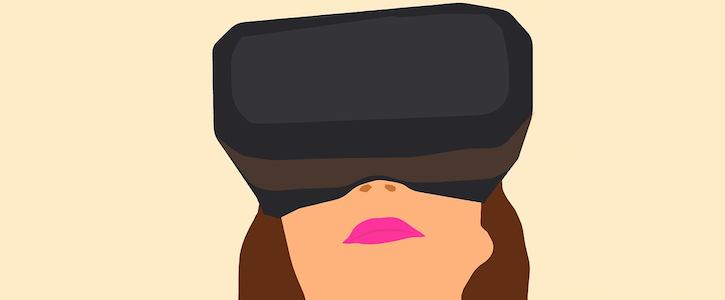Virtual Reality Shows Promise in Treating Eating Disorders
A new study suggests the tech deftly complements cognitive behavioral therapy.

Eating disorders can be some of the most difficult mental conditions to treat. Unlike other anxiety or compulsion disorders, the main trigger for an eating disorder—food—is unavoidable. But a new paper suggests that visual exposure in virtual reality (VR) might help patients battle their eating disorder in a physician-controlled environment, complemented with traditional cognitive behavioral therapy (CBT).
A team of researchers led by Sofian Berrouiguet, MD, at France’s University Hospital of Brest culled through more than 300 studies on virtual reality's use in treating eating disorders, and concluded that the technology was a promising therapeutic tool. Barbara Peran, another author of the paper, told Healthcare Analytics News™ that VR gives doctors several unique advantages to treating disorders like anorexia and bulimia.
>> READ: AbleTo Is Changing How We Use Behavioral Health Data
“The virtual environment makes it possible to control the unexpected and to be exposed in a safe environment to certain fears that may be difficult to reproduce in real situations,” Peran said in an email.
In the future, Peran said, it could be helpful to integrate other senses into treatment, like smell and taste. But right now, the main limitation is that many therapists and physicians simply aren’t trained in using VR. The equipment itself often isn’t cheap, as well. (The cheapest major headset on the market, Google’s Daydream kit, retails for about $99). Patients also may have to deal with “simulation sickness.”
Still, the paper noted that direct studies of VR on eating disorders are few and far between. The paper used data from several clinical trials with a single patient, along with others that examined just a handful. It seems that VR-therapy is still in its infancy—just isolated physicians with the means and expertise giving it a shot on willing patients.
Still, the paper notes those isolated trials show signs of progress. The paper found that most researchers focused on exposing users to food stimuli or their own body image, in a controlled format. The authors present VR as a compliment to CBT, the traditional method of therapy that treats anorexia nervosa and bulimia, allowing therapists to work on patients’ response to stimuli (like looking in the mirror or being exposed to food) in a virtual environment, and then apply CBT techniques to help break down their negative body images and anxieties.
According to the paper, some studies suggested that patients exhibited less loss to follow up—meaning less regression in between sessions—with a VR program. Part of this could be the “attractiveness of new technologies,” but the paper also reports that many studies observed an “increased motivation for change” when patients used VR, isolating and deconstructing their fears.
VR’s use in therapeutic practices are new. But for an all-encompassing mental condition like a severe eating disorder, limiting variables and giving patients a controllable environment has the potential to change their world.
Get the best insights in healthcare analytics directly to your inbox.
Related
Big Names Put Big Money Behind VR Surgery Start-Up
Podcast: Adoption of Healthcare Tech in the Age of COVID-19 with Dr Kaveh Safavi
June 22nd 2021Kaveh Safavi, MD, JD, global health lead of Accenture Health, discusses how the pandemic influenced the speed at which healthcare organizations adopted new technologies and how this adoption is impacting patient care.